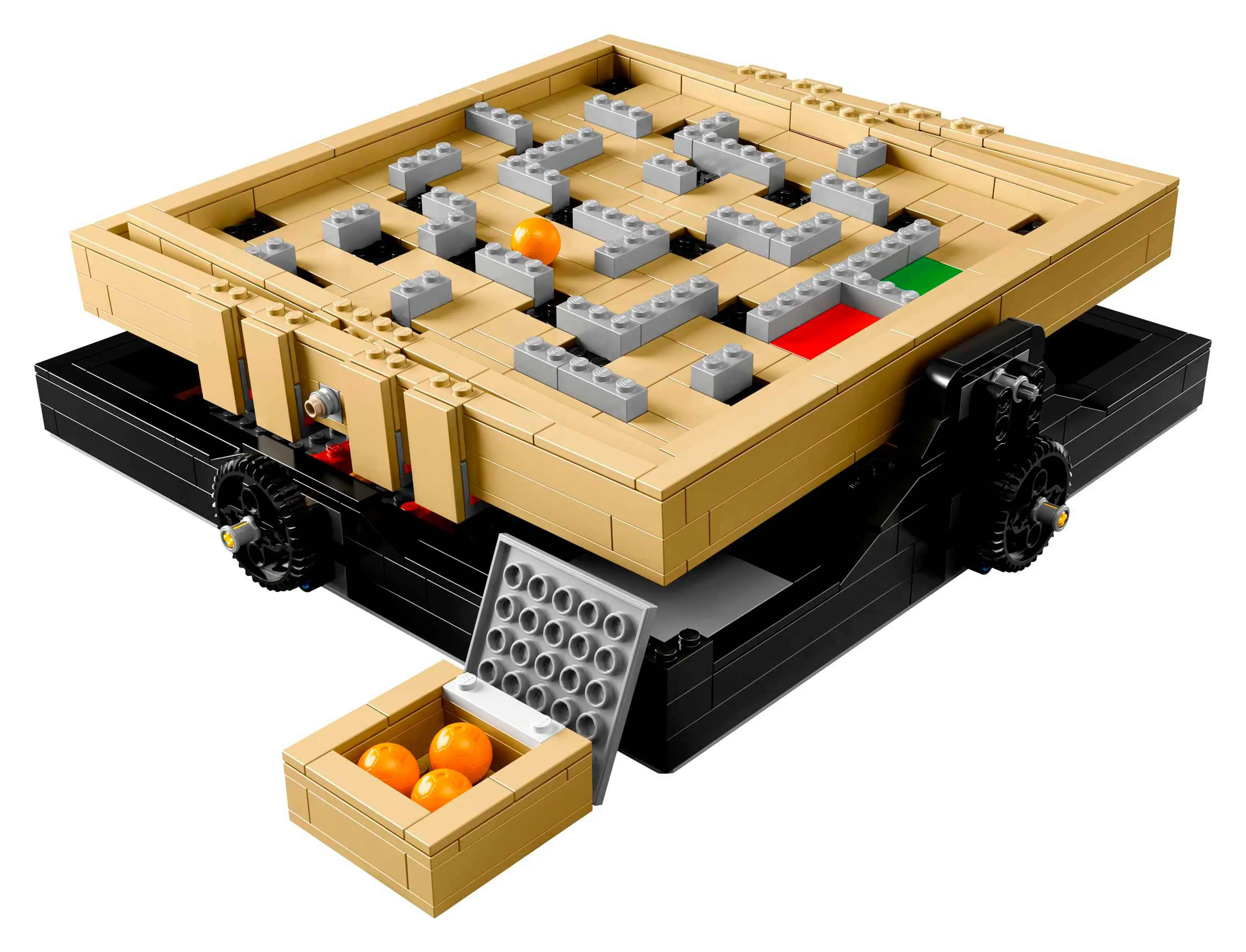In 2009, a group of young designers sets out on a mission to develop a new play theme. With a target group of 7-to-9-year-old children, they have to come up with something so good that even new builders will enter the LEGO universe.
For inspiration the team travelled back in time. To medieval Japan. To the legends of the master of martial arts: the inscrutable ninja.
For centuries, an enigmatic veil of mystery and magic have wrapped around the black-clad ninja, who climbs the steepest walls, and runs the narrowest ridges of the dark nights. Children and adults have always loved the stories and the characters, they have come to know through movies, cartoons and books.
On a late Friday afternoon in the fall of 2009, a Concept Developer sketches the first ideas on a piece of paper. 18 months later the LEGO NINJAGO play theme is launched introducing us to four very young boys and one very special girl. We follow them through their Spinjitzu training under the strict but fair discipline of Sensei Wu. We watch them grow from children to young adults. We feel their pain as they struggle to find their origins. We see them rise to their full potential when they defeat the villains. We even see them fall in love.
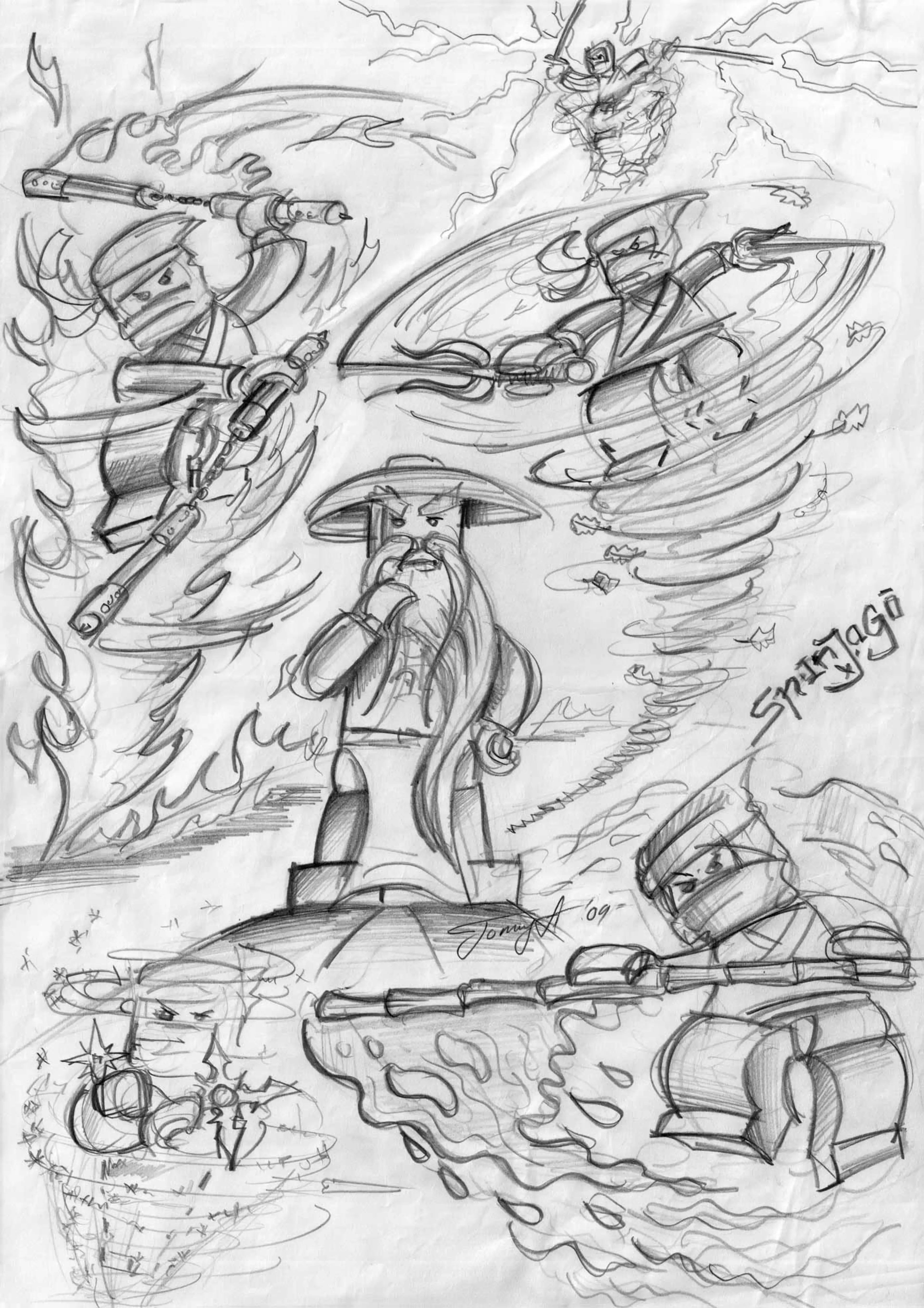
Testing the ideas
The story of NINJAGO is much more than a product launch in January 2011, however. Months of research, testing, building, playing and testing again went ahead of the launch. The story had to be built from the simple idea of the ninja to an entire universe of heroes and villains, of weapons and vehicles, of skills and unique personalities.
Plenty more drawings follow in the first few weeks – hundreds of them steadily build up the content. Through numerous focus groups the content is tested and re-tested, and children seem to love the concept boards and the ninja. Appealing as the story and ninja characters are, one problem remains. Children in the focus groups cannot tell good guys from bad.
Working in a few different directions to find the best bunch of villains, the design team eventually settles on the Skulkins – an army of skeletons from the Underworld. The Skulkins are easy to relate to and easy to recognize as the villains of the story. They answer to the evil Lord Garmadon, who sends them out to claim the Golden weapons in the pilot episodes of the story.
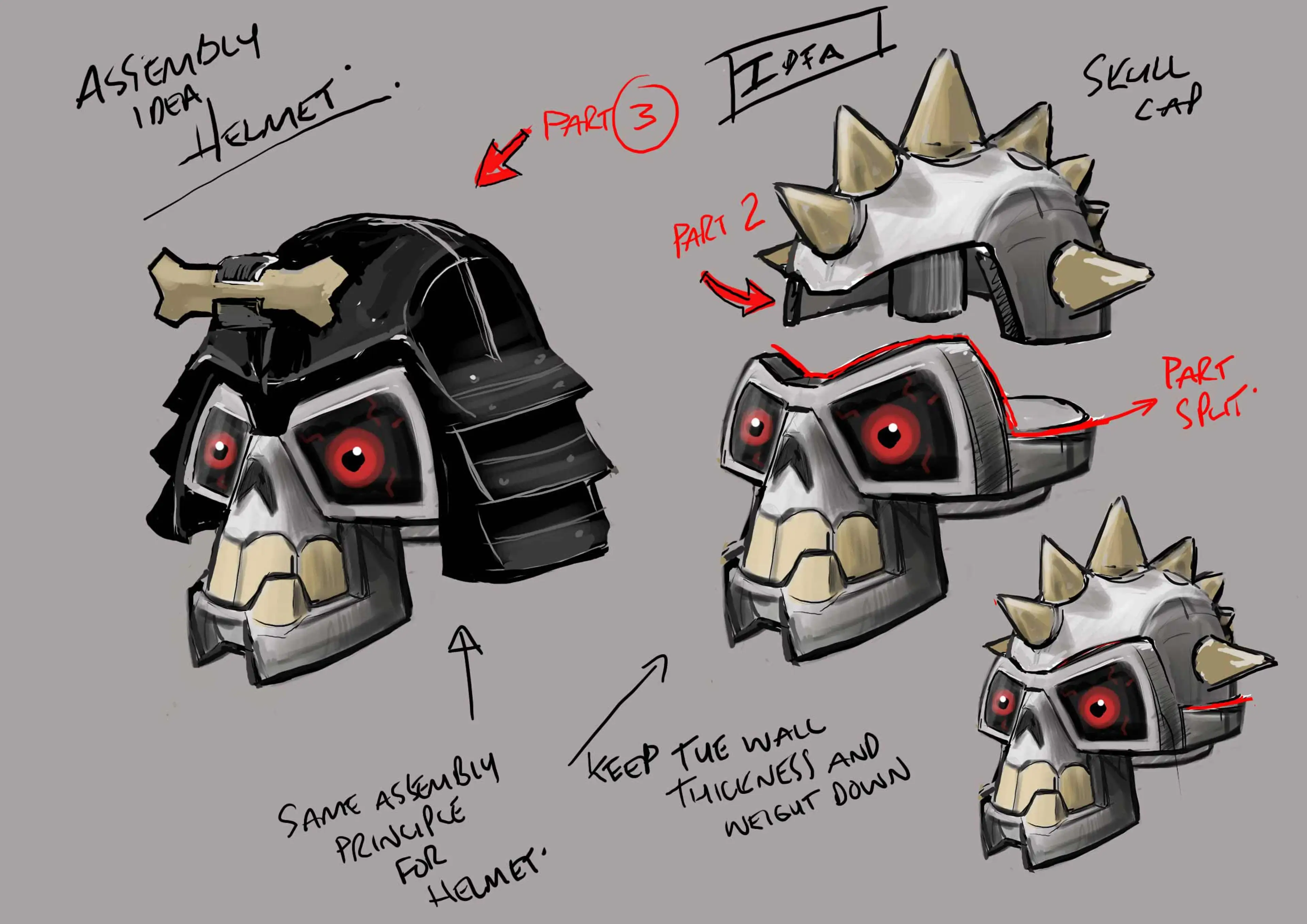
The design team also learned from children in the focus groups that it is difficult to relate to four almost identical ninjas – all dressed in the traditional black. Introducing colours – red, blue, black and white – helps. And because it is a playful universe the ninja can have any colour imaginable.
.jpg?width=3840&quality=68&auto=webp&format=webply)
Different versions of the main characters. Children did not relate to the first all-black ninjas. Introducing colours and different personalities, interests and skills made the characters appealing to a much broader group of children.
Settling on four different colours (+ a green one later on) for the main characters the story begins to build, and the characters begin to take form. All four boys possess unique skills and personalities, their names are changed from Dante, Poe, Blake and Whitman to Kai, Jay, Cole and Zane. And they are ready to launch.
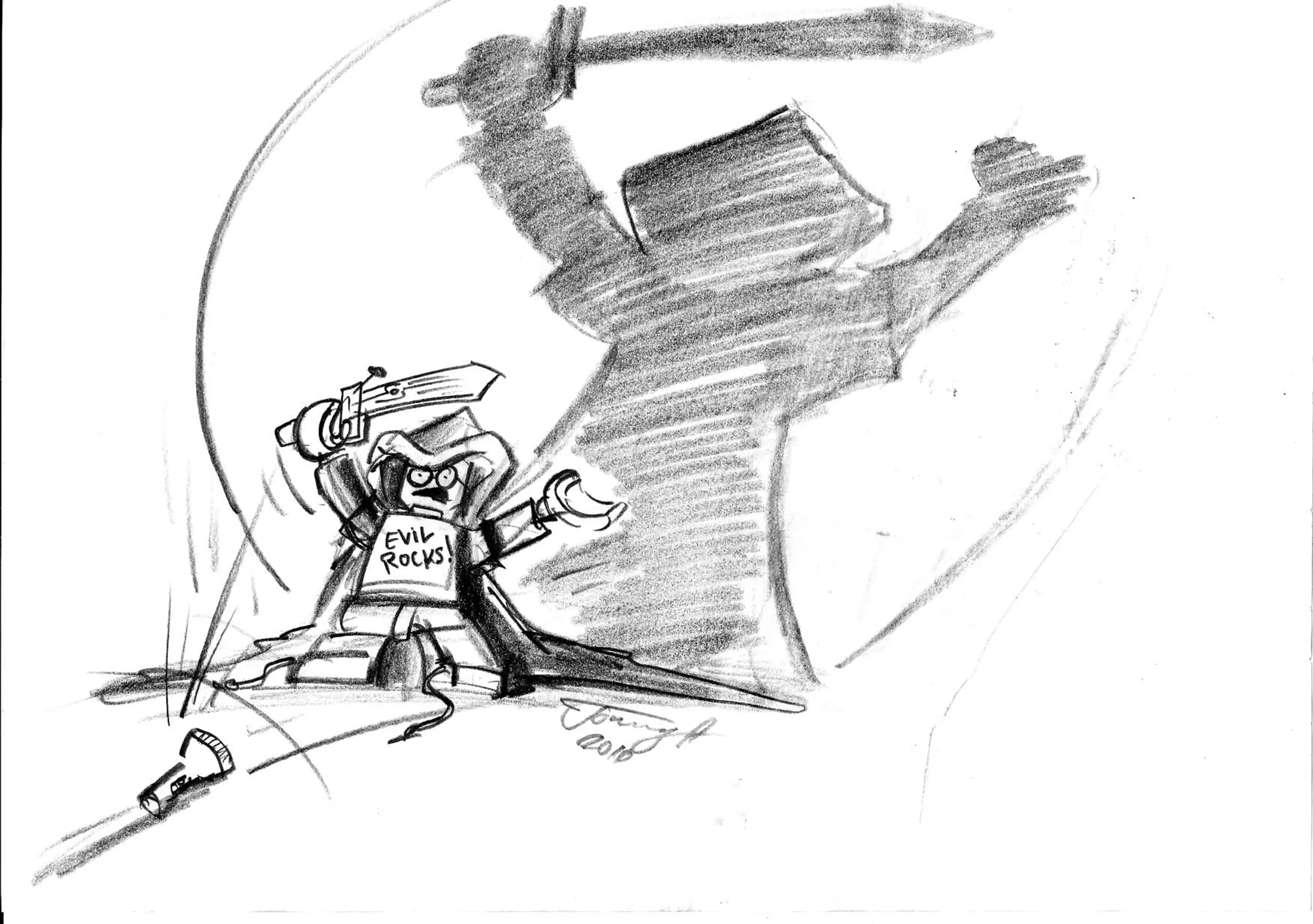
First ever drawing of Lloyd Garmadon, the young son of evil Lord Garmadon. Lloyd shows up in the first episode of Rise of the Snakes. Just a child – and slightly annoying and a bit spoiled – he seems to be no threat to the newly won peace of NINJAGO. By accident he wakes up an evil snake tribe and a future in his father’s footsteps seems predictable. Learning the importance of strength and goodness from training with the ninja he finds that his destiny lies elsewhere. He is the Chosen One – he is Green Ninja.
Mastering the art of Spinjitzu
Adding an element of action play and not merely developing a construction toy, the design team comes up with the spinners for the piloting season. With a spinner – one for each ninja – the ancient martial art called Spinjitzu transforms the ninja into tornado. A tornado so strong that it seems impossible to defeat. The collectible cards, special weapons and minifigures spinning against each other in the battle arena are built into the storyline.
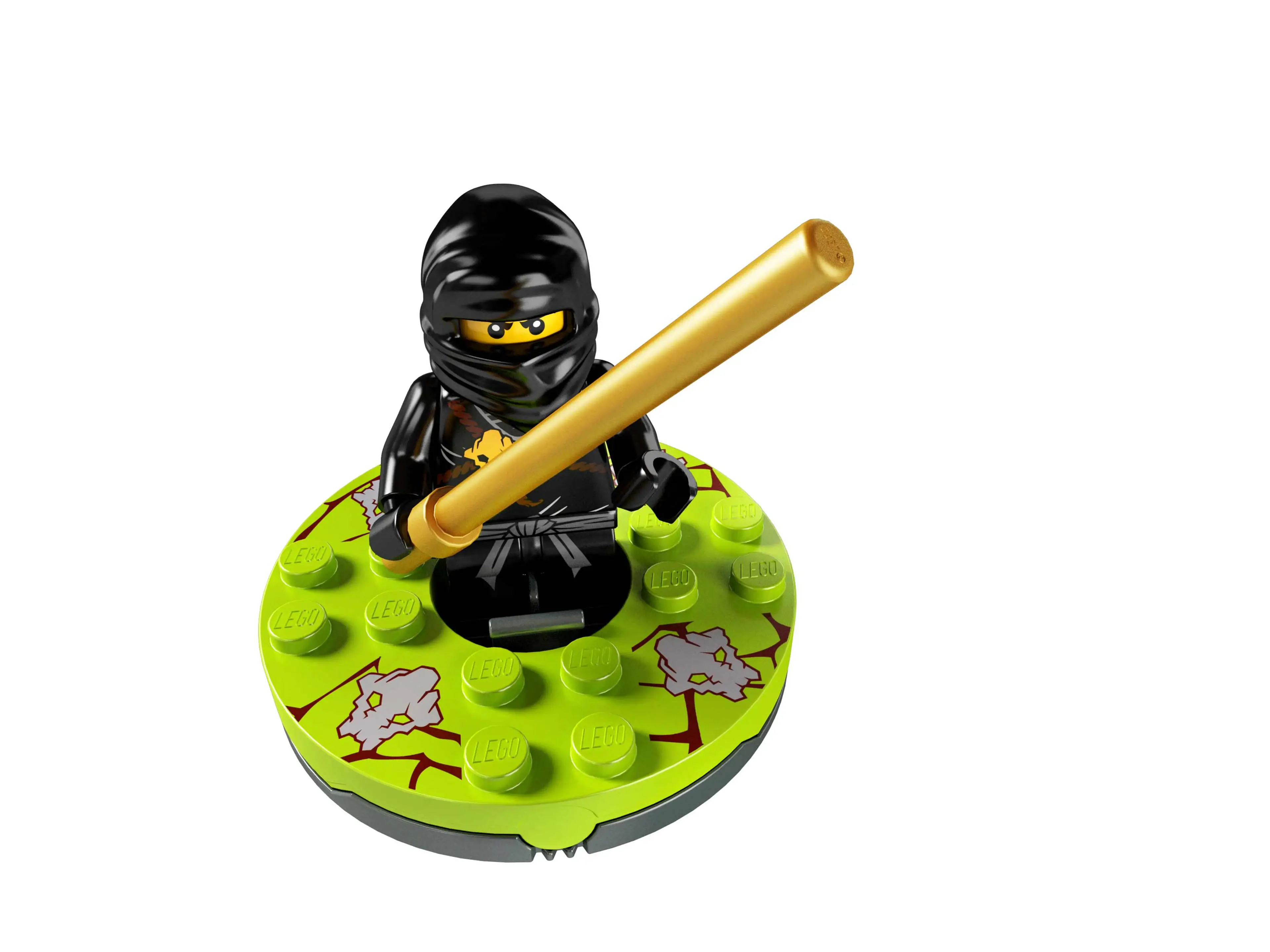
Spinner from 2011, Set no. 2112
Spinjitzu is the ancient form of martial arts created by the First Spinjitzu Master (FSM) – the father of two key characters in the story. Sensei Wu, who serves as the wise old mentor of the four protagonists, and his evil counterpart; none other than his own brother, the darkest of lords, Garmadon. The FSM was nearly immortal and lived for thousands of years. His sons inherited a similar immortality, and they are both more than a thousand years old.
A universe filled with stories … and sets
Developing a brand new play theme takes more than awesome martial arts, four cool kids, and a bunch of nasty villains. To become a successful homegrown IP it has to work on multiple platforms. Children already know the ninja characters pretty well. The key to success is to build an entire universe around the characters. Temples, monasteries, dojos, vehicles, dragons, and irresistibly captivating stories that engage an audience much broader than the original target group.
The temple is an icon of ninja culture, hence the Fire Temple #2507 launches in the pilot season in 2011. Plenty of minifigures, lots of action and even a fire dragon almost breathing its own element.
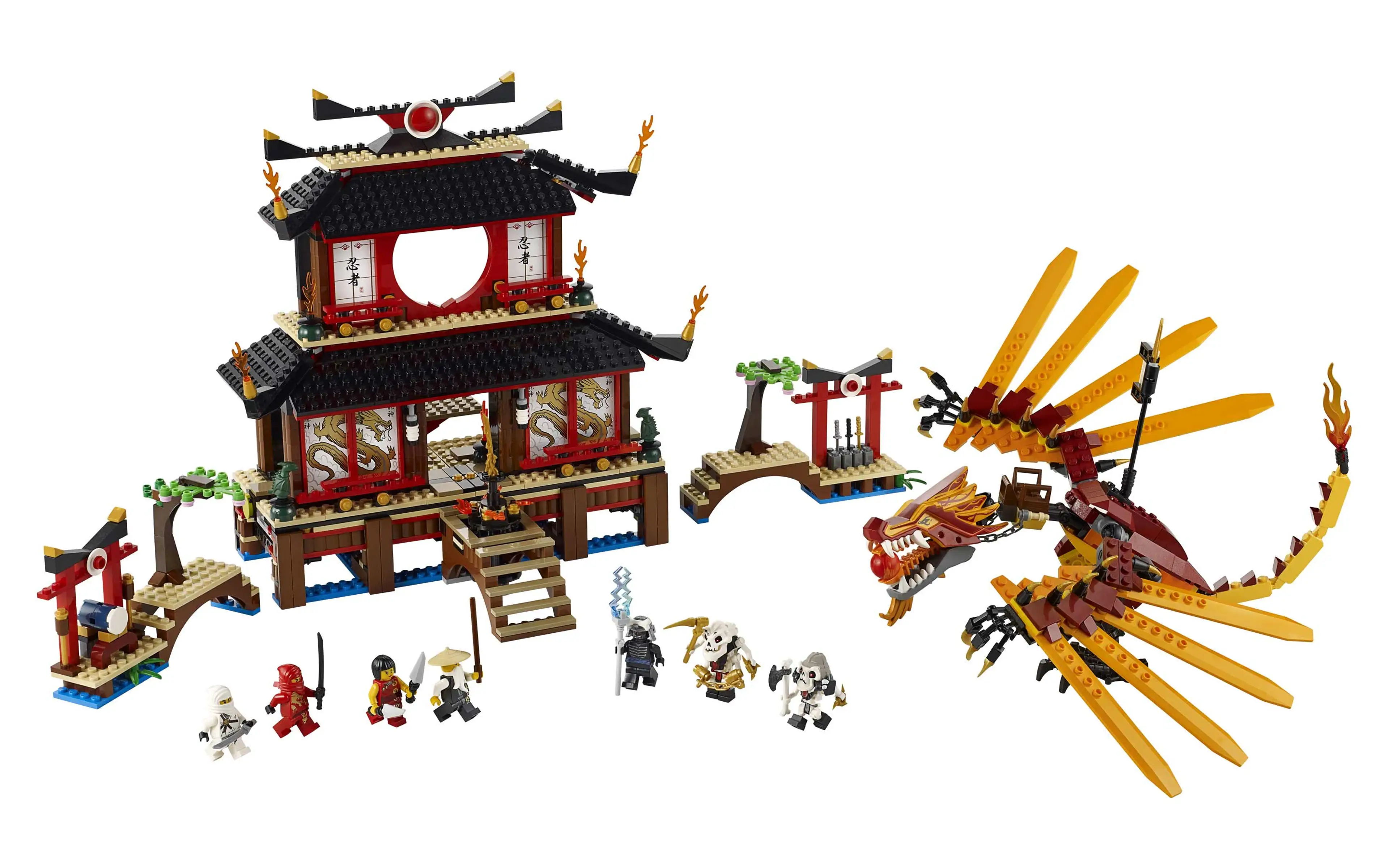
Fire Temple, Set no. 2507, 2011
.jpg?width=3840&quality=68&auto=webp&format=webply)
Nya is part of the original cast, sister to the red ninja Kai. After joining the battle against the enemy Skulkins she is captured and taken to Garmadon’s lava-filled Fire Temple. Tired of being left behind, the brave girl develops Samurai X – with an armour to keep her identity secret. She later becomes a Ninja
All sorts of villains
The Skeleton Army – known as the Skulkins – are defeated in the pilot episodes early 2011. Later, young Lloyd Garmadon accidentally wakes up a new enemy: the Serpentine with its five unique tribes all worshipping the Great Devourer. In later seasons a Stone Army, NINDROIDS, Sky Pirates and even ghosts make sure there is never a moment of peace in NINJAGO City.
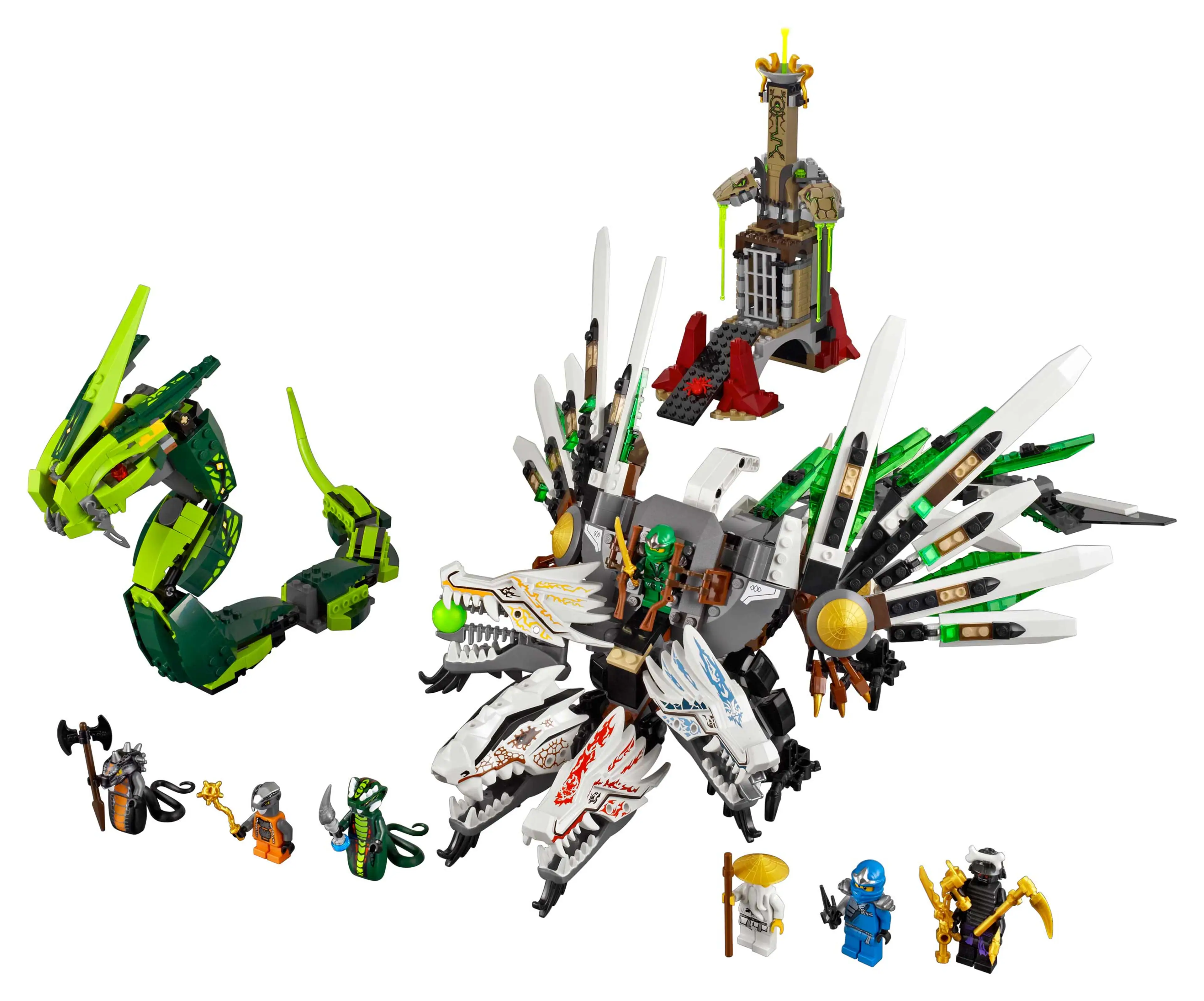
Defeating the Skulkin Army of the Pilot Season a new cast of villains show up threatening to ruin the city of NINJAGO in 2012.
Set no. 9450 includes the horrific Great Devourer as well as the amazing four-headed epic dragon. According to legend the great Devourer was the viper, who bit young Garmadon – its freatful venom corrupted his soul and turned him into the brutal, power-seeking Lord Garmadon we meet in the first few seasons.
Becoming an evergreen
LEGO NINJAGO launch January 2011 as a Big Bang product line. A Big Bang has a scheduled life span of no more than three years. It is backed by solid marketing activities, and it spreads from mere LEGO boxes to tv-series, lifestyle products, video games etc. According to the exit strategy NINJAGO is meant to end its retail career in late 2013, leaving room for a brand new homegrown IP: LEGO Legends of Chima.
The NINJAGO exit strategy has to be revised, however. Co-existing with Chima throughout 2013, the customers and consumers keep requesting more NINJAGO. Taking their voices into account the play theme continues. Year after year. Until 2017, when it is decided to restructure the portfolio and include NINJAGO in the group of evergreen play themes alongside LEGO Friends and LEGO City.
The story has only just begun
The original idea of adding an element of action into the product line has continued over the years. The spinners are replaced by Airjitzus in 2015, and since then other types of twirling accessories have sent the ninjas flying. Dragon Master, Spinjitzu Slam and Spinjitzu Burst to name a few.
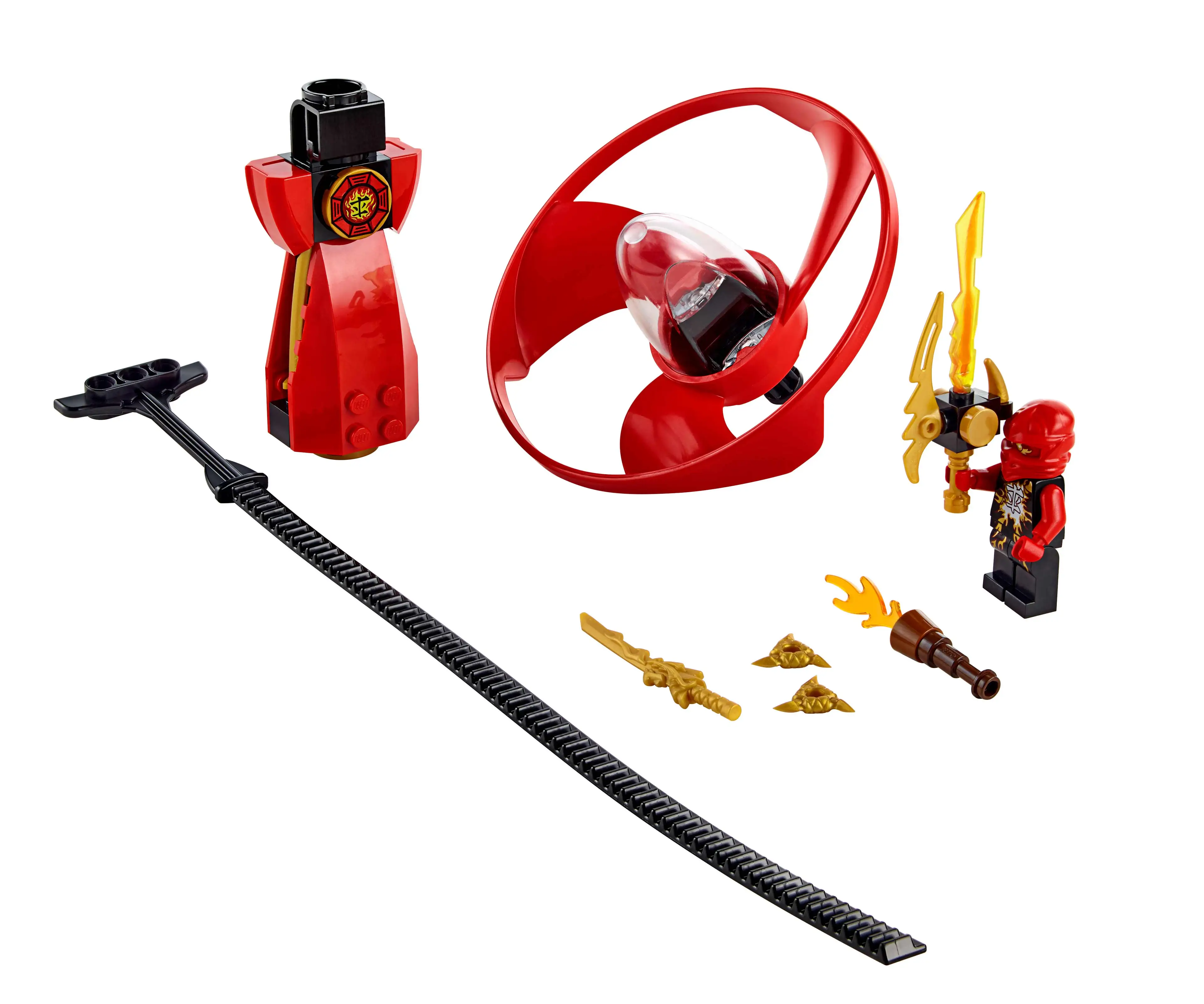
Airjitzu Kai Flyer, set no. 70739, 2015
The four ninjas we met in the pilot season, Nya, Lloyd and the rest of the crew remain relevant to far more children than originally intended. They are the heroes in a universe that knows no boundaries – in time nor in space. They work in TV-series, in LEGO sets, on t-shirts and even on the silver screen. Stories about friendship, collaboration, and good versus evil never grow old. The story has only just begun…

